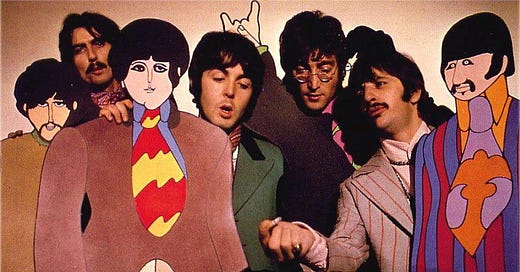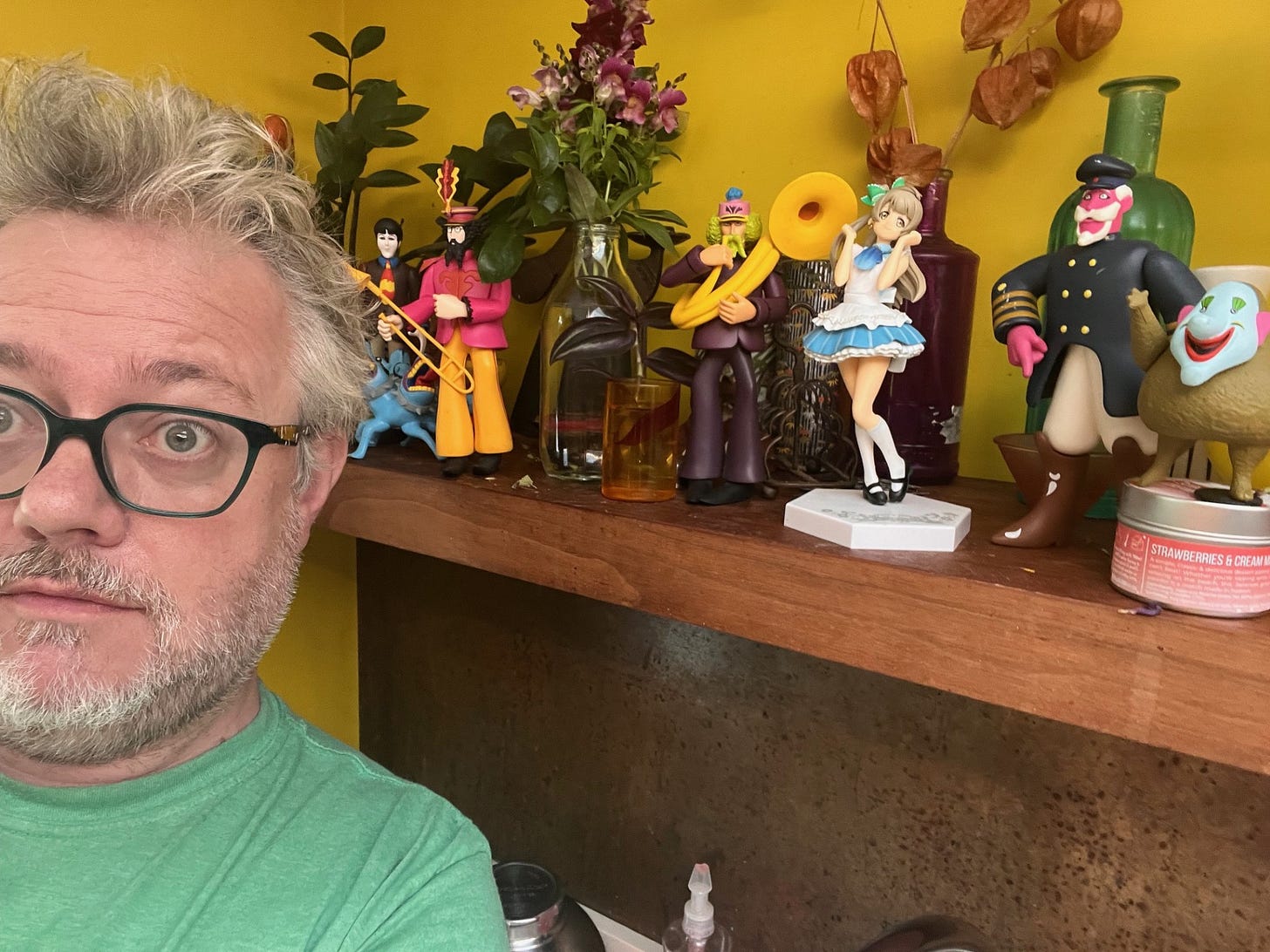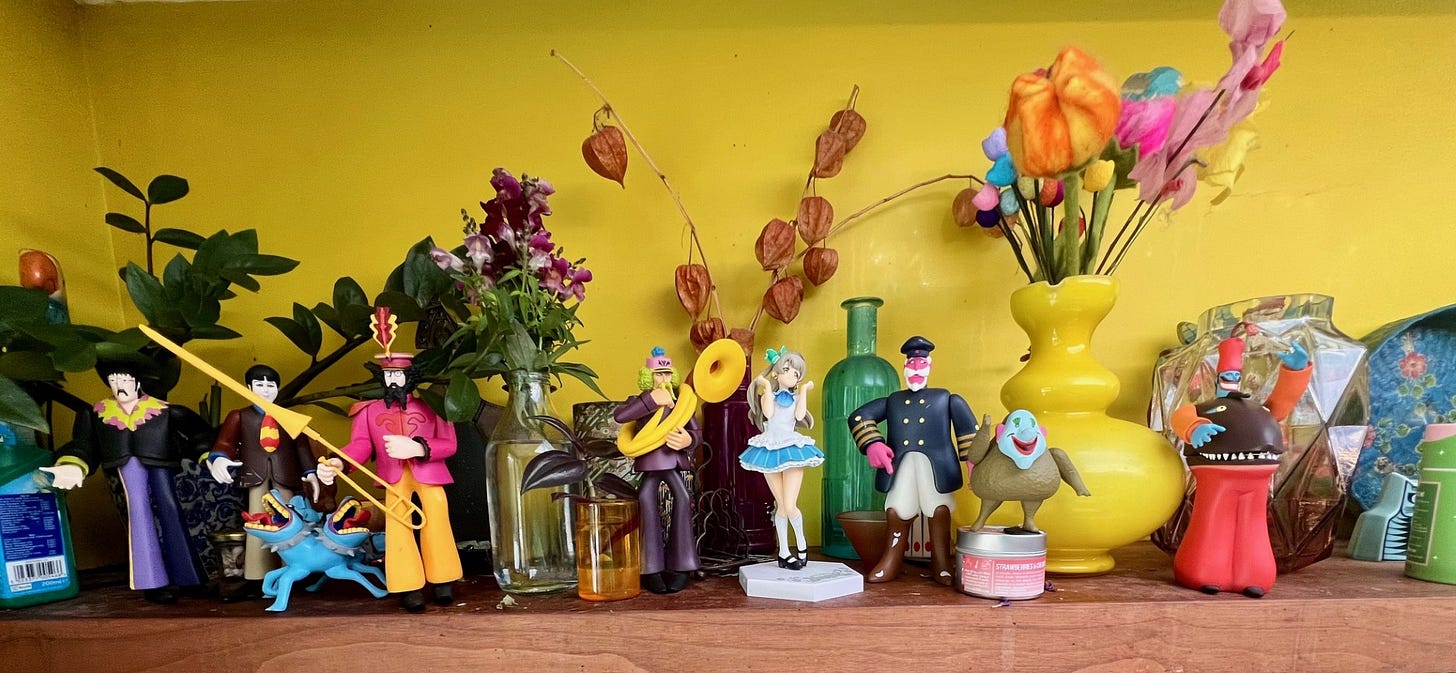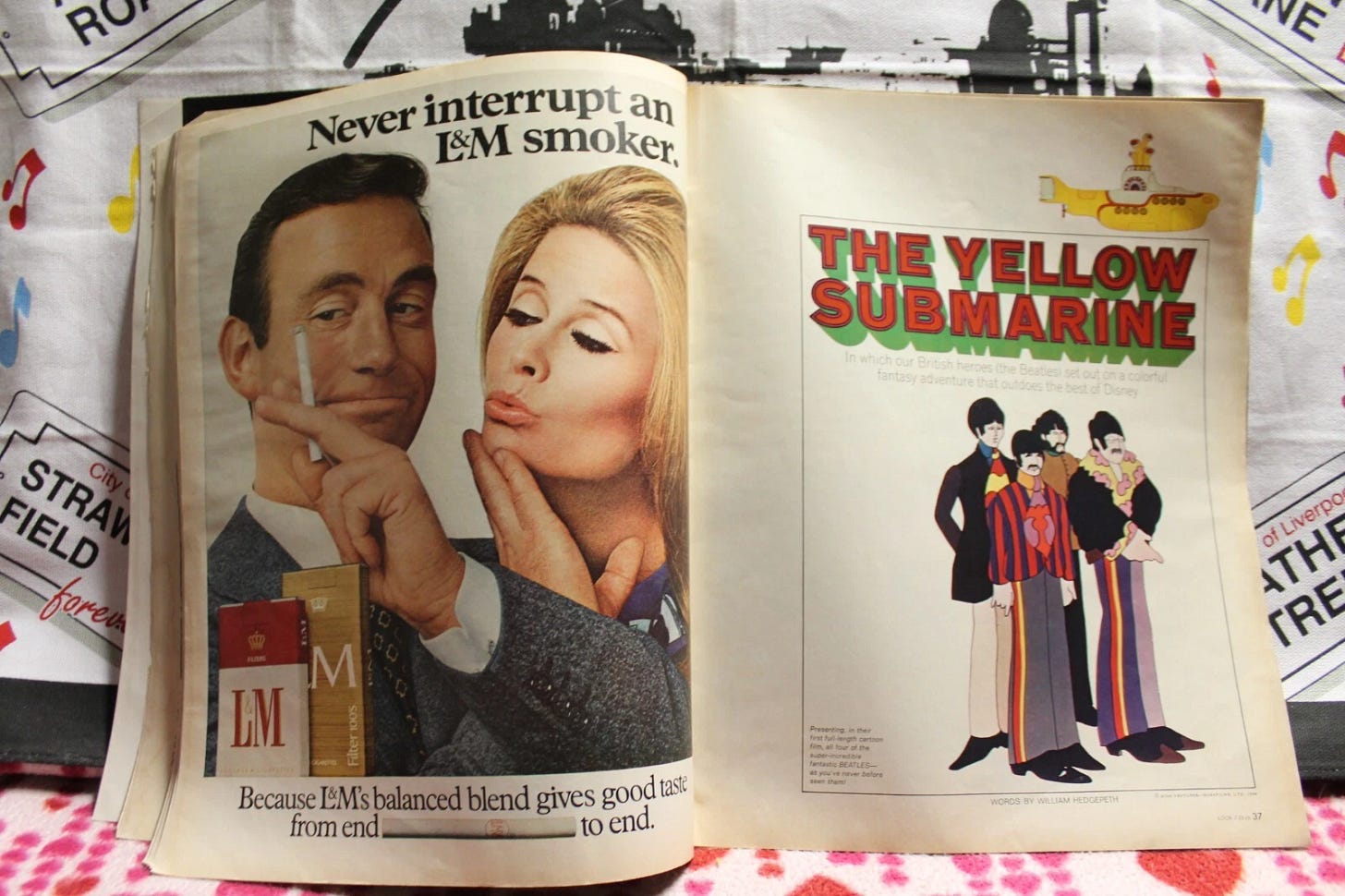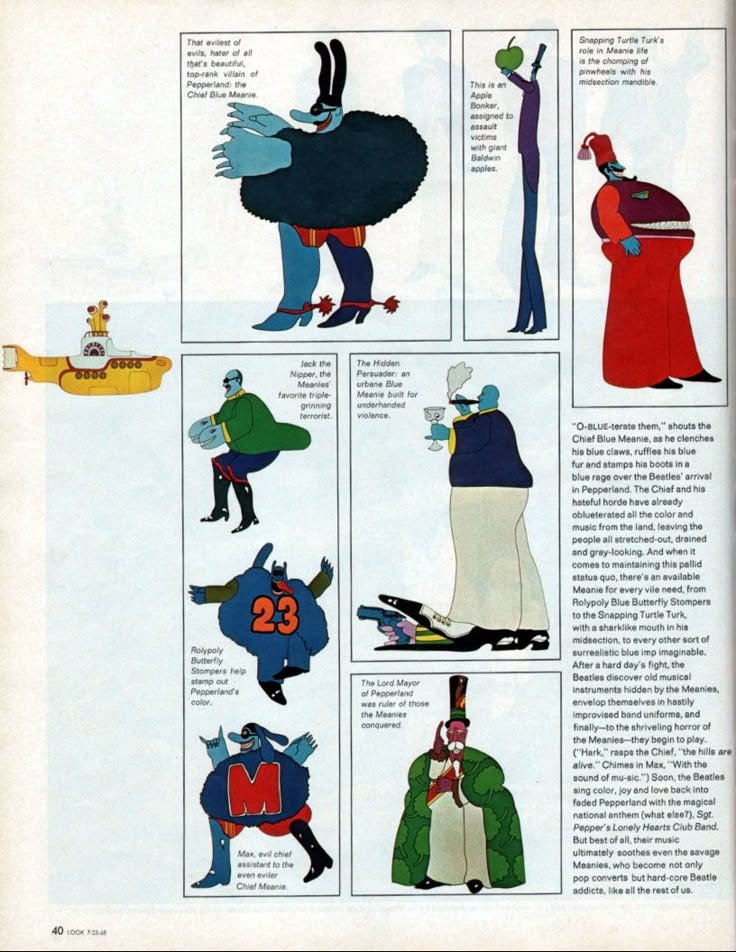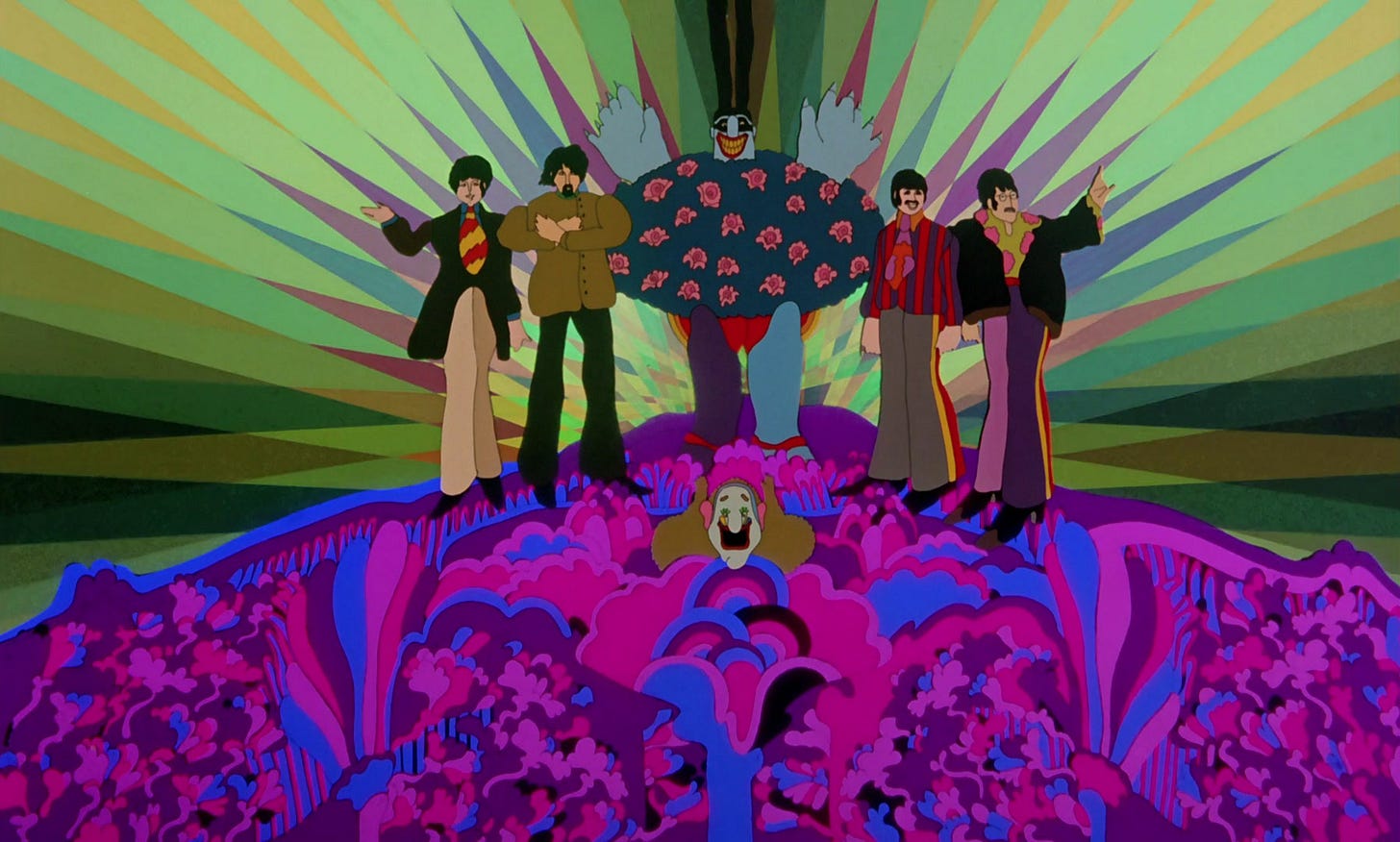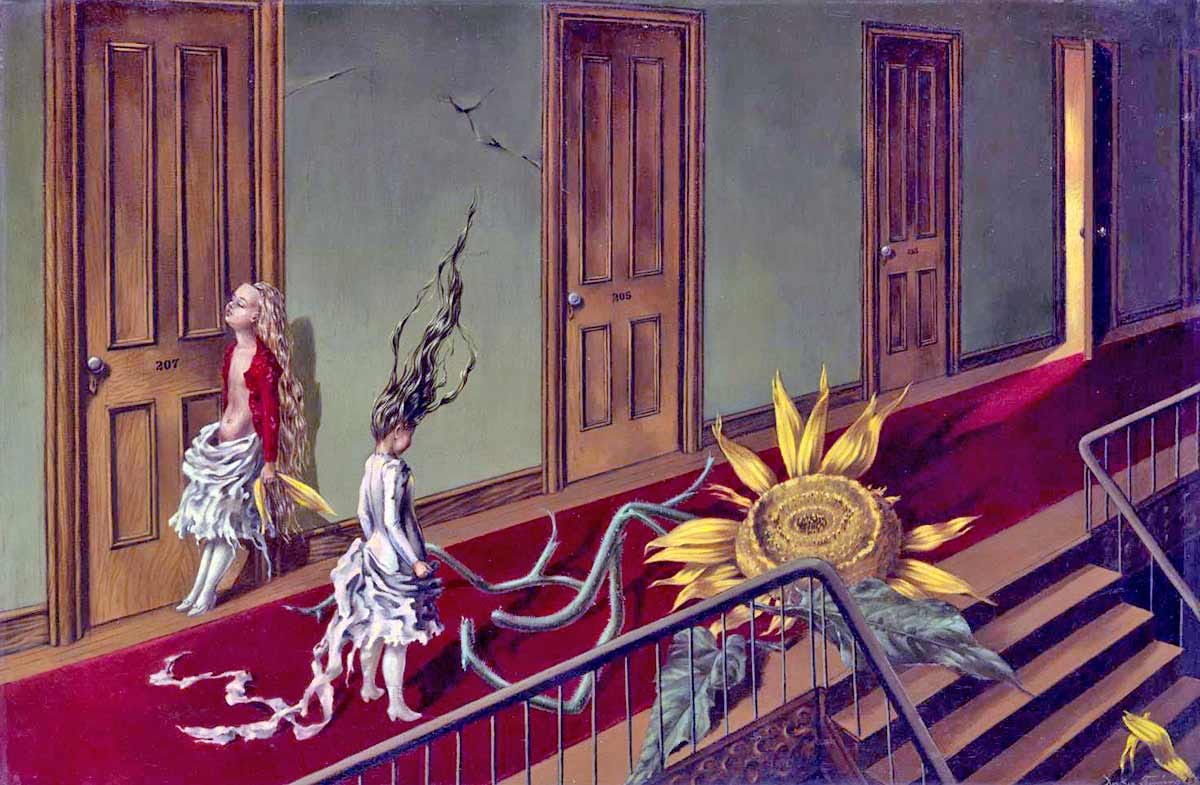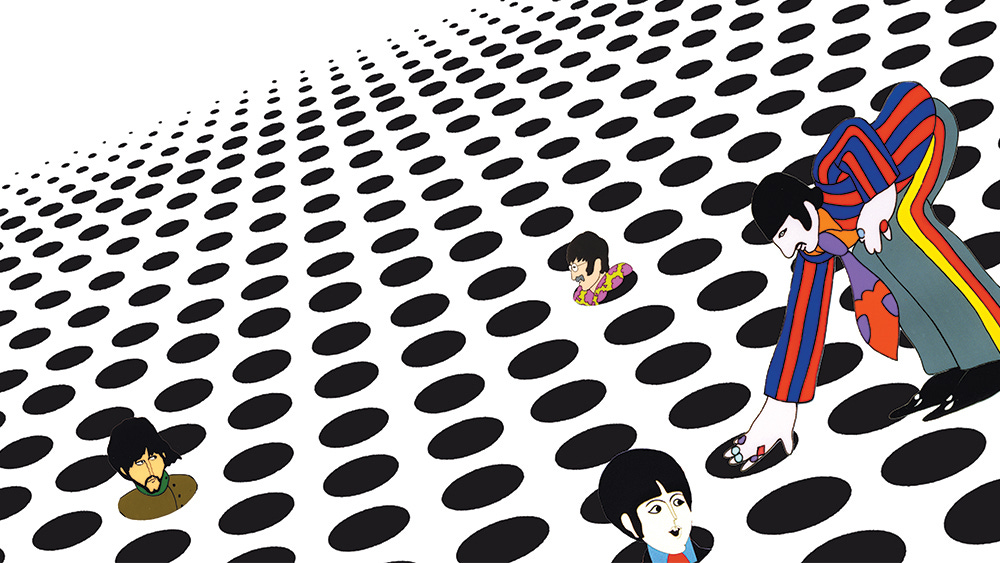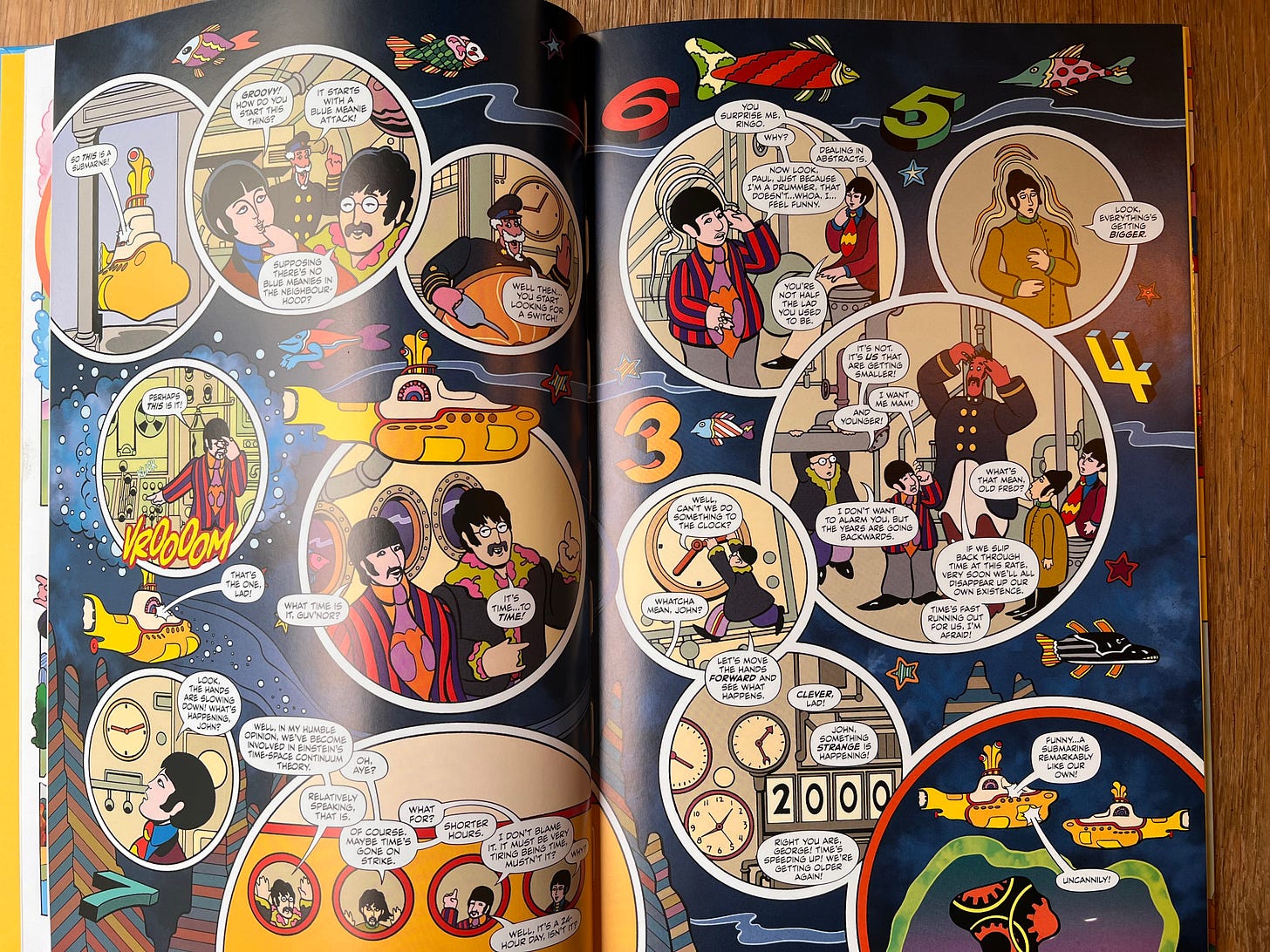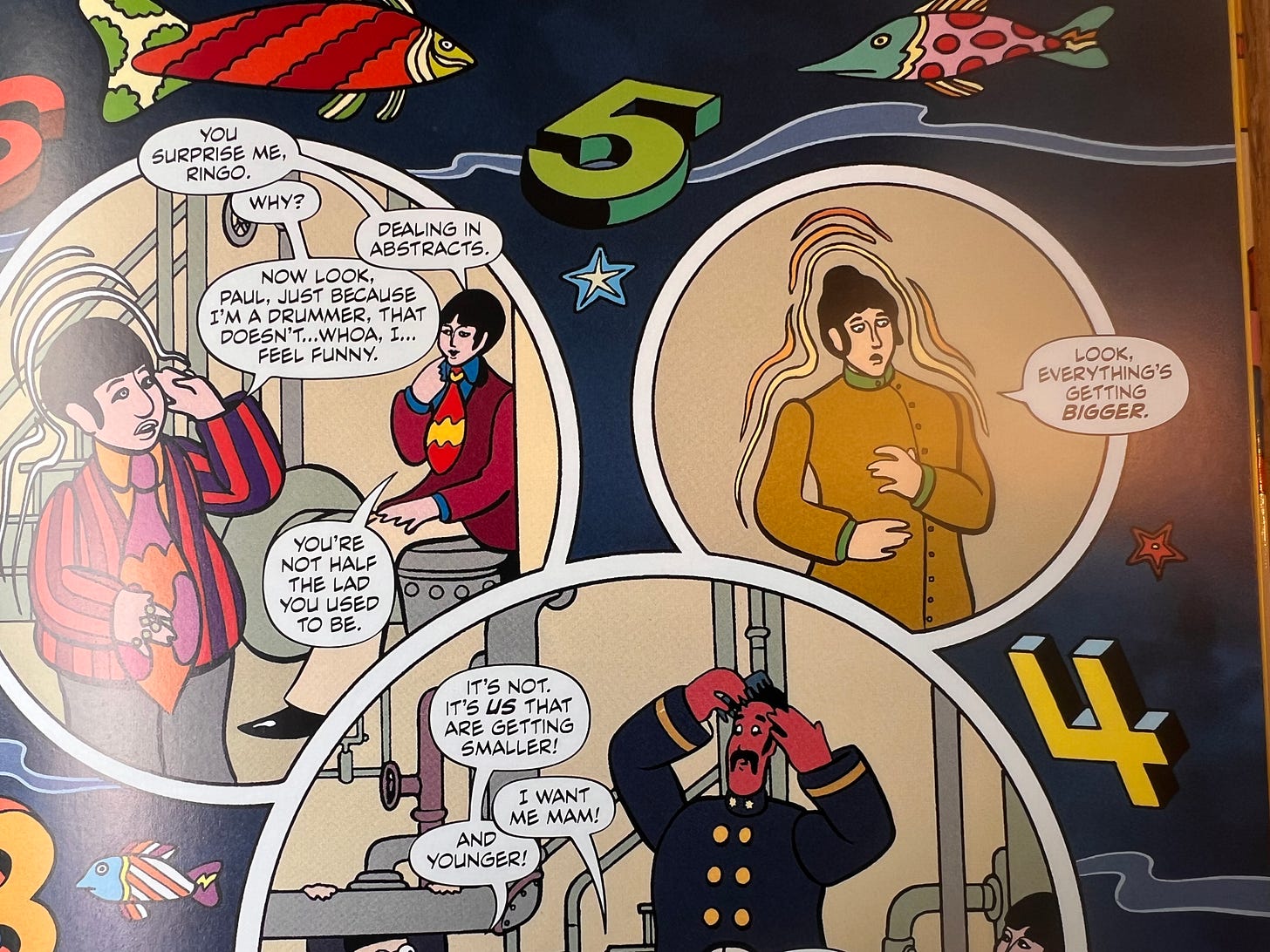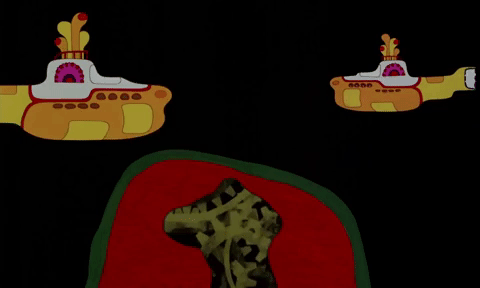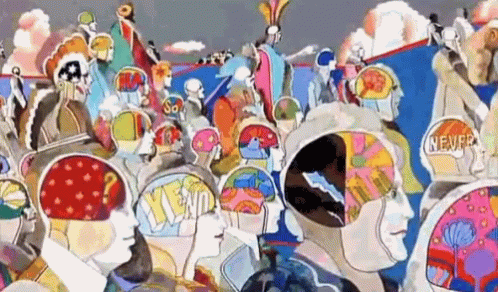We’ve just had Father’s Day in the UK, and thanks to my wonderful family, I’m now swimming in Yellow Submarine memorabilia. Check out some of these beauties now adorning my kitchen…
And now without me in the way, flanking my Arisu…
It makes talking about Yellow Submarine all the more meaningful, so let’s set sail on an adventure under the sea that’s very much like Alice’s journey under-ground. An adventure that, based on watching it again last weekend, I must say has stood the test of time. And while it’s a curio (both one of the most iconic Beatles products, yet not really produced by them) it’s unavoidable if we want to talk Carroll.
So with your forgiveness, I’ll recycle a few paragraphs from my album covers post, because I like the way they set the scene…
Contracted to produce another movie that they had no appetite to make, The Beatles loved the idea of outsourcing an animation they wouldn’t have to appear in. And yet, although Yellow Submarine was written, animated and voiced by others, they still had a big hand in the concept, and Yellow Submarine reprises many of their most Carrollian numbers from ‘Nowhere Man’ to ‘Lucy in the Sky with Diamonds’, not to mention the title song.
The idea of “_______land” as a device makes Wonderland and Pepperland, the setting for the movie, also feel like close cousins. While acknowledgement of the debt to Carroll is less explicit here, Wonderland is a word that even The Beatles current marketing uses to sum up the feeling of Yellow Submarine, though that trend starts with the contemporary reviewers, so many of whom seemed to see Alice everywhere.
This LOOK special article is a goldmine:
With distance, it’s harder for the modern viewer to pick up on all the social commentary, but back in 1968 William Hedgepeth is busy trying to encourage people to see past it:
“[It’ll] be analyzed and scrutinized for its subtle social ‘message’ […] but what will remain is the sheer fun of an elegant fantasy romp that puts the quartet up against the most mind-blowing collection of creatures and circumstances since Alice in Wonderland or Oz or Tolkien’s Middle Earth or that garish dream you had the night you raided the refrigerator”
-William Hedgepeth, LOOK, July 23rd 1968
In the same article, Hedgepeth calls it “a renaissance of joyful absurdity in the best tradition of Lewis Carroll”.
Later in 1968, on October 28th, Kevin Thomas reports that the San Francisco Film Festival’s program director labelled the film “a sort of Beatles-in-Wonderland”.
“It’s all in the mind, y’know…” says George, in the movie.
But am I dreaming it? I don’t think so! Just for starters, let’s take the title song itself, from 1966. We know it was embellished with contributions from Donovan, who has explained that it came easily to him:
“Paul asked me for a line and I gave him one […] ‘sky of blue, sea of green’ […] children’s songs were easy for me, because I had absorbed so much poetry. My father had read me Robert Louis Stevenson, “Alice in Wonderland” and an enormous amount of Victorian poems, and so I was well versed in those.”
-Donovan, Goldmine1
While references are of course much broader - including Hitler’s speeches as a model for the Chief Blue Meanie’s rants, Wonderland tropes - think time playing tricks, portals and holes, shouting mixed with laughter, word games, surreal imagery, a picaresque succession of encounters - are all over the movie.
Let’s take a closer look…
Who doesn’t love this early painting by Dorothea Tanning, with its strong whiff — I think — of Alice in the “long low hall” down the rabbit hole…
There were doors all 'round the hall, but they were all locked; and when Alice had been all the way down one side and up the other, trying every door, she walked sadly down the middle, wondering how she was ever to get out again.
-Lewis Carroll, Alice’s Adventures in Wonderland Ch.1
When we see Tanning’s work we’re (partly) reading a semiotic code of locked doors, portals, and hallways as metaphors for the unconscious that, once seen, really can’t be unseen. I see a direct lineage with Yellow Submarine:


Doors as portals, threshold moments that invite the protagonist into a quest they just embrace without hesitation position The Beatles as heroes fighting for a new optimistic culture. As one contemporary commentator points out, the ‘60s animated adventure is an epic tale of bravery and ‘both feet in’ exploration:
“Ulysses did not stop to question the delights and terrors of his journey, nor did Gilgamesh, Orpheus, or Alice. Nor do John, Paul, George, Ringo and Old-Young Fred, their navigator. Nor should we”
-Eve Adamson, Crawdaddy, No.20 Nov 1968
A common narrative feature of these epics is transformation, and movement between worlds, like Orpheus following Persephone into the Underworld, or Alice going underground, through a rabbit hole, transformed in Yellow Submarine into an entire “sea of holes”:
From sea of holes to sea of time.
We know the Beatles loved playing with reverse sounds, and varispeed - stretching time and tone - and on the way to Pepperland, passing through the sea of time, the Beatles first regress & shrink, and then age rapidly, growing ludicrous beards.
Check out Paul shrinking, like an Alice after she sips her drink.
Just as the Beatles play with forward and backward sounds, time in the sea of time, travels in two directions, as twin submarines travel towards each other:
And then we have a slew of Wonderland characters, not least the Queen of Hearts-like Chief Blue Meanie — shrieking ‘kill them all’ (like ‘off with their heads’) as well as his aggressive flying glove, a terrifying bully.
During my re-watch, I noticed a blue rabbit, that I can’t find an image of, and a young girl holding a twizzle-stick and looking into the ‘camera’ who reminds me of Alice instantly.
There are strange, but loquacious companions, like Jeremy Hillary Boob, the Nowhere Man — uttering statements like ‘I am an Englishman, although I’m not’ or ‘the footnotes grow on trees’ — that I feel Carroll would have been proud of.
These word games seep into visual jokes, like the “foothills of the headlands”.
And finally, the ending — in which Pepperland fades into the real Beatles waving — closes the loop. Back into the ‘real world’. Hello again, kitty!
Pepperland, like Wonderland, is an adventure with the quality of a dream. It’s a kind of ‘greatest hits’ of songs and ideas that are framed in iconic images that create a snapshot of late ‘60s attitudes. It’s Alice-y, but also much more. A head movie that’s “all in the mind”.
I’ll see you all next week.

